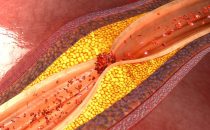Reading clinical practice guidelines, except for specific consultation, is usually tedious. These guidelines are nor meant to be read as a textbook, or at least this is what most readers believe.

But it looks like this reader’s perception has finally been acknowledged, hence “table 3” in the new European dyslipidemia guidelines, where the new recommendations, the amends to the 2016 recommendations, the new sections and the new, or recently revised concepts, are enumerated. A perfect summary to refresh and update all we already knew.
New recommendations:
-
Check arterial plaque volume (carotid or femoral) by ECG, to eventually modify the risk of a particular patient, especially those at low or moderate risk.
-
Calcium score by CT can also be considered for “conventional” risk reassessment in asymptomatic individuals at low or moderate risk.
-
Measure, even though just once, Lp(a) value to identify patients with heterozygous familial hypercholesterolemia (values over 180 mg/dl or > 430 nmol/L).
- In high risk patients with triglycerides between 135 and 499 mg/dl, consider treating with omega 3 in addition to statins. With even higher values, we should treat the risk of pancreatitis.
- In patients with heterozygous familial hypercholesterolemia in primary prevention, consider reducing baseline LDL levels beyond 50% or an absolute value <55 mg/dl.
-
Statin treatments are recommended in primary prevention according to risk levels in elderly patients younger than 75.
-
Statin treatments in primary prevention in patients over 75 could be considered, especially with high baseline risk.
-
In type 2 diabetic patients at very high risk, the guidelines recommend reducing LDL baseline levels ≥ 50% or an absolute value <55 mg/dl. In case of less extreme risk, they recommend < 70 mg/dl. Upon failure to meet the target values, we should consider combining statins with ezetimibe.
-
Statins are NOT recommended in premenopausal diabetic patients who are considering pregnancy or are not using adequate contraception.
-
For patients with ongoing acute coronary syndrome who fail to meet LDL targets despite being treated with the highest tolerated statin dose, we should consider adding a PCSK9 inhibitor (if possible, upon admission).
The revised concepts include:
-
More intensive LDL reduction in secondary prevention. For those that have already presented an event and are at high risk, they recommend < 55 mg/dl. For those experiencing a second vascular event within 2 years of the first (regardless the territory) and are already taking the highest tolerated statin dose, they recommend considering a < 40 mg/dl LDL target.
- In primary prevention, targets were also intensified. For very high-risk patients with no history of events presenting a new event, they recommend reducing LDL baseline levels beyond 50% or < 55 mg/dl. For patients at high risk, they recommend reducing baseline levels beyond 50% or an absolute value lower than 70 mg/dl. If there is moderate risk in primary prevention, an LDL value lower than 100 mg/dl seems enough. For low risk patients, the cutoff value is lower than 116 mg/dl.
Read also: FFR in the Time of ISCHEMIA.
Another one of the points these guidelines emphasize was differentiating myopathy by statins from the so-called muscle symptoms associated to statins.
2020-01-30-ehz455Reference: European Heart Journal (2020) 41, 111-188.
Subscribe to our weekly newsletter
Get the latest scientific articles on interventional cardiology
We are interested in your opinion. Please, leave your comments, thoughts, questions, etc., below. They will be most welcome.





